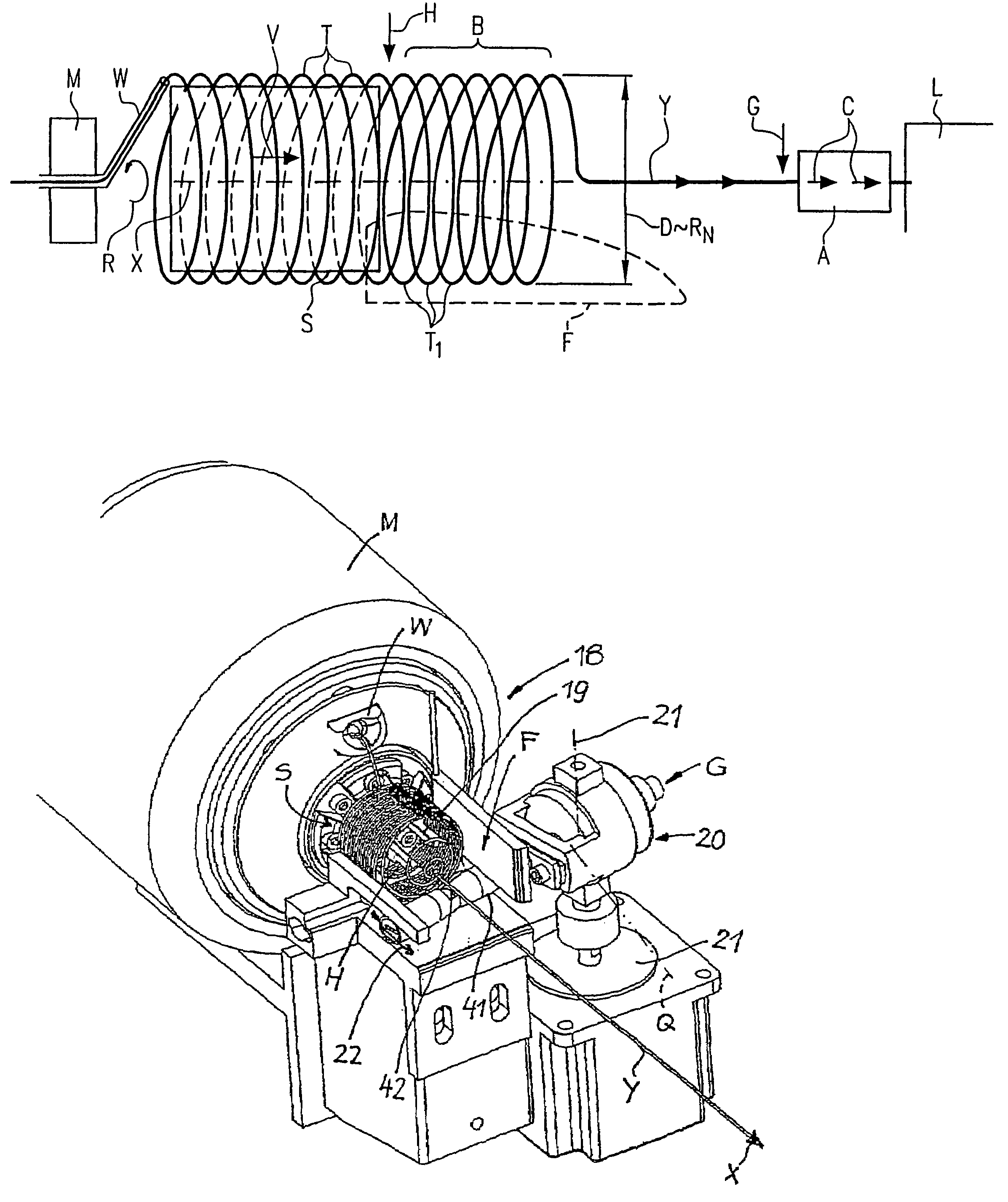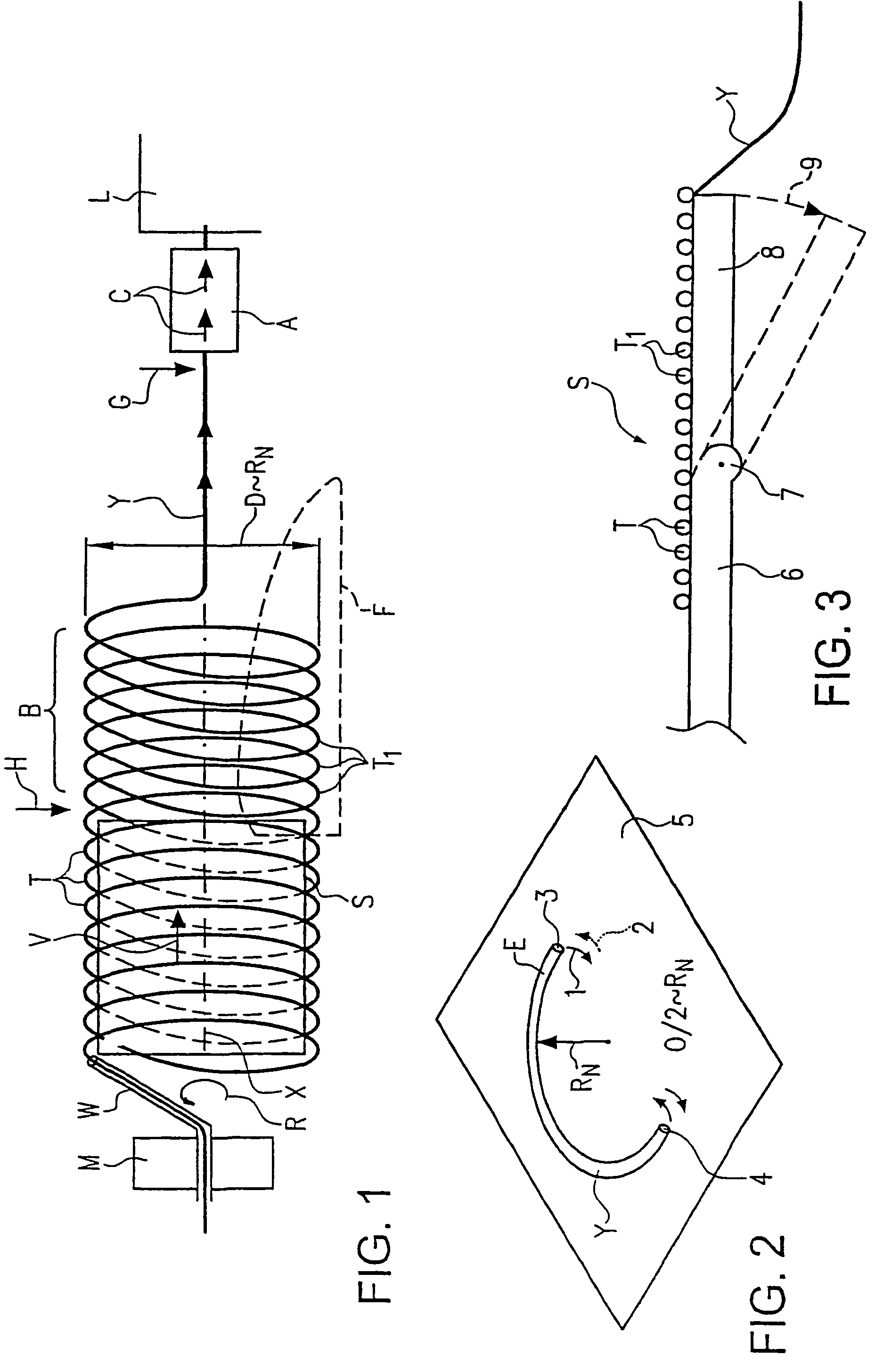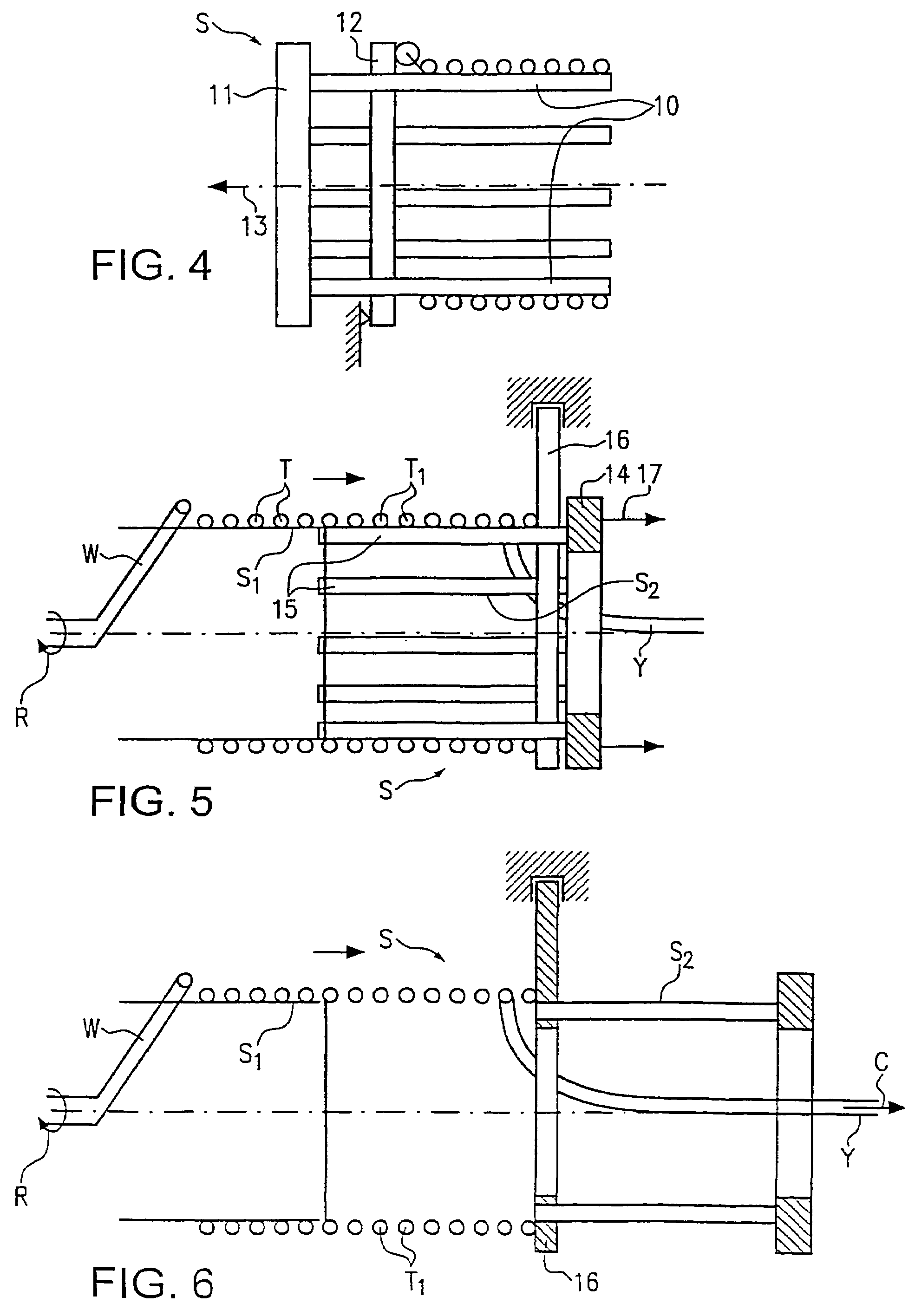Method for inserting weft yarns
a technology of weft yarn and insertion method, which is applied in the directions of knitting, weaving, transportation and packaging, etc., can solve the problems of long insertion time dictated by this method, the very high efficiency potential of modern weaving machines cannot be used satisfactorily, and the mechanical load of the weft yarn is high, so as to reduce the tension or attenuate the rise of the yarn tension. , the effect of good yarn control
- Summary
- Abstract
- Description
- Claims
- Application Information
AI Technical Summary
Benefits of technology
Problems solved by technology
Method used
Image
Examples
Embodiment Construction
[0072]In FIG. 1 endless weft yarn material Y, e.g. coming from a not shown yarn supply, is pulled into a rotating winding element W which is moved by a drive M with a substantially continuous rotational winding movement R. The weft yarn material Y is wound by the winding element W on an inner mechanical support S in subsequent or adjacently placed windings T as a tubular winding package which moves forward on the support S by a speed V in the direction of an arrow. The windings T then are set free in a winding package section B beyond the end of the support S in withdrawal direction and further in the direction of the axis X from the support S, while they maintain the tubular configuration. In the set free winding package section B the windings T1 are conveyed forward loosely and substantially without tension. Due to inertia and the form stability of the winding package the windings T1 remain free in the space. Approximately in alignment with the axis X an insertion system A of a we...
PUM
| Property | Measurement | Unit |
|---|---|---|
| Length | aaaaa | aaaaa |
Abstract
Description
Claims
Application Information
 Login to View More
Login to View More - R&D
- Intellectual Property
- Life Sciences
- Materials
- Tech Scout
- Unparalleled Data Quality
- Higher Quality Content
- 60% Fewer Hallucinations
Browse by: Latest US Patents, China's latest patents, Technical Efficacy Thesaurus, Application Domain, Technology Topic, Popular Technical Reports.
© 2025 PatSnap. All rights reserved.Legal|Privacy policy|Modern Slavery Act Transparency Statement|Sitemap|About US| Contact US: help@patsnap.com



